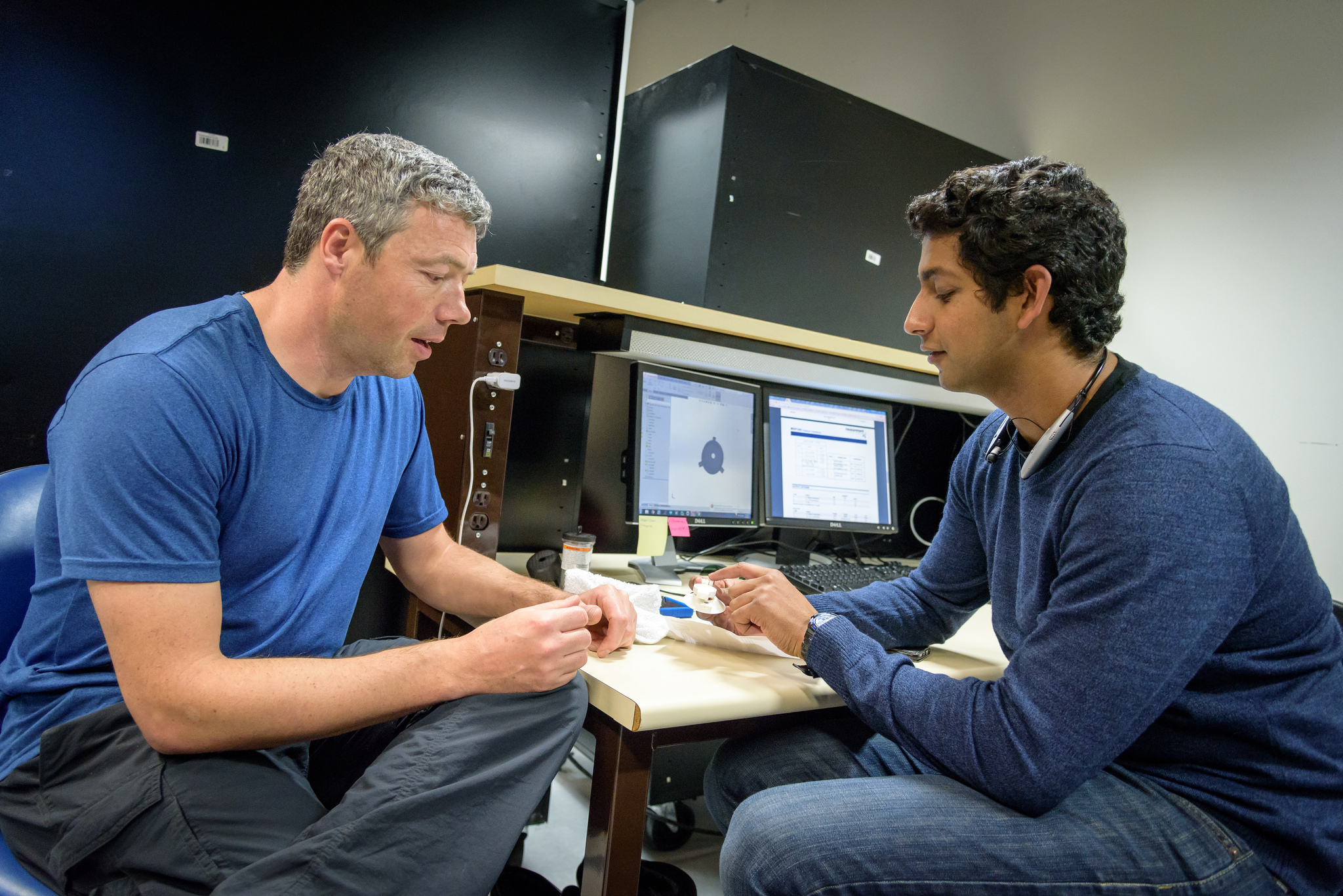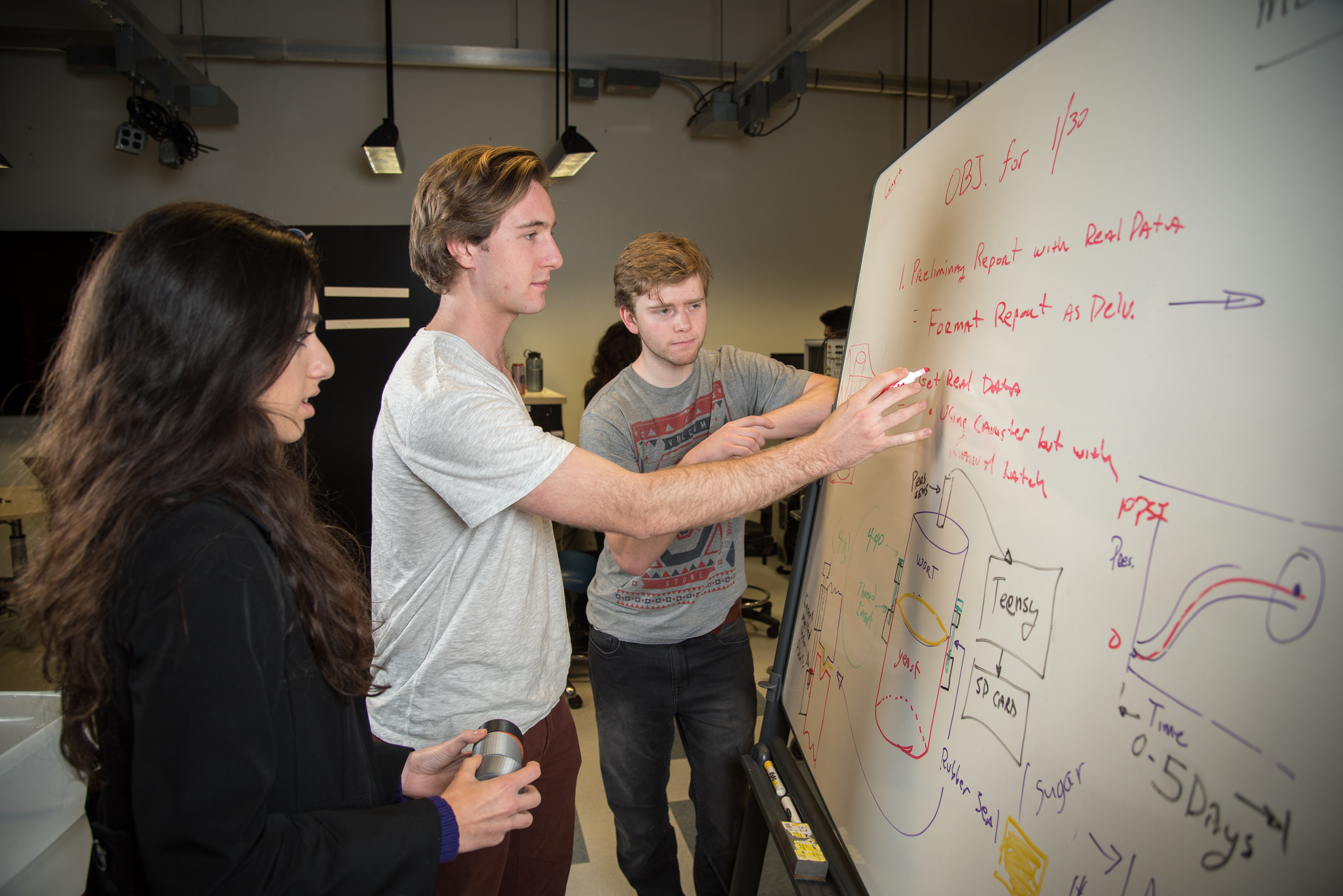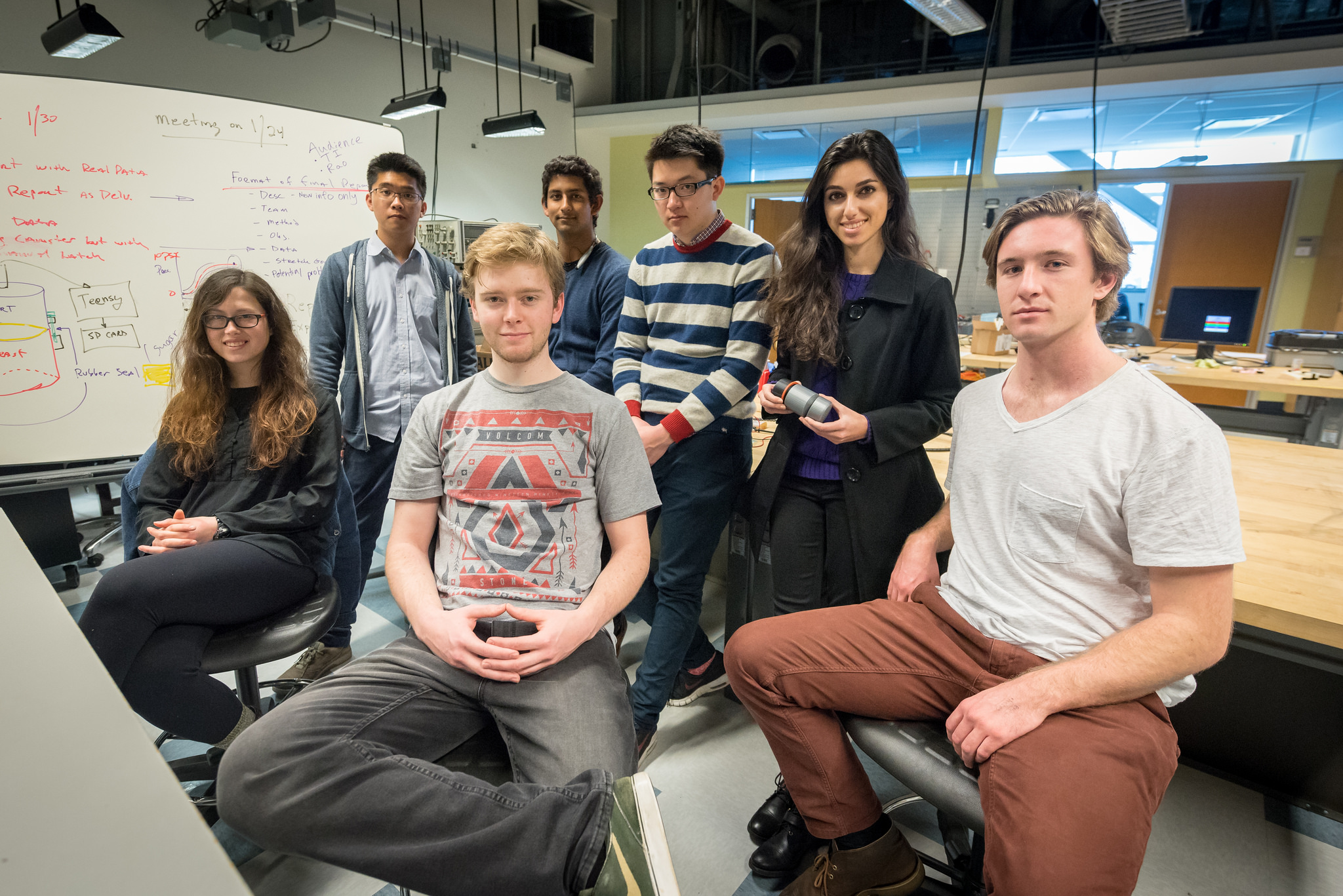Engineering Students Design Experiment to Test Whether Beer Can Be Brewed on the Moon
San Diego, Calif., Jan. 31, 2017 — Can beer be brewed on the moon? A team of UC San Diego engineering students is hoping to find out. They are finalists in the Lab2Moon competition being held by TeamIndus, one of the four teams with a signed launch contract to send a spacecraft to the moon as part of the Google Lunar XPRIZE challenge. And they're using the Qualcomm Institute (QI) Prototyping Facility and Design Studio to make the magic -- or rather, the science -- happen.

The experiment will test the viability of yeast on the moon—and result in a freshly brewed batch of beer. Understanding how yeast behaves on the moon isn’t just important for brewing beer in space. It’s also important for the development of pharmaceuticals and yeast-containing foods, like bread.
The group of Jacobs School of Engineering undergraduates call themselves “Team Original Gravity.” They are one of just 25 teams selected from a pool of 3,000 to compete for a spot aboard TeamIndus spacecraft, which is planned for launch on Dec. 28, 2017. If the team is selected, they will be the first to brew beer in space.
One thing is for certain: Their idea has captured peoples' imaginations around the globe. The TeamIndus project has gone viral in the media, appearing in Discover Magazine, The Daily Mail, Space.com and other publications.
“The idea started out with a few laughs amongst a group of friends,” said Neeki Ashari, a fifth year bioengineering student at UC San Diego and the team's PR & Operations Lead. “We all appreciate the craft of beer, and some of us own our own home-brewing kits. When we heard that there was an opportunity to design an experiment that would go up on India’s moonlander, we thought we could combine our hobby with the competition by focusing on the viability of yeast in outer space.”
The team designed a unique system to accomplish this task.
First, the experiment does not brew the "wort," or unfermented beer. Instead, all of the prep work required before yeast is added will be done on Earth, rather than in the experimentation vessel.
Secondly, rather than separating the "fermentation" and "carbonation" phases as would normally occur during the process of making beer, the team plans to combine them. This eliminates the need for releasing accumulated CO2, which can result in sanitation and safety issues. It also prevents the possibility of over-pressurization if anything in the system fails and makes the system easier to design.

Lastly, the testing of fermentation and yeast viability will be done via pressure, rather than using density measurements as done on Earth. This is because density measurements use gravity.
“Converting the pressure buildup to fermentation progress is straightforward, as long as volume and original gravity—specific gravity before fermentation, hence our name—are known prior to the experiment,” said Han Ling, a fifth year bioengineering undergraduate and the team’s brewing lead.
QI Principal Design Engineer Curt Schurgers, director of the QI Prototyping Facility and Design Studio, has advised TeamIndus on the creation of the prototype brewing vessel, which is slightly smaller than a beer can and was initially printed in plastic on the Lab's 3D printer (it will eventually be created from stainless steel). "The vessel is equipped with a pressure sensor to sense when carbon dioxide is being released and prove when the brewing process is happening," says Schurgers, "and we're also helping the team work on a valve mechanism to release the yeast and wort. We’re actively helping them solve problems like how to open this valve: Should it be spring-based or gravity-based, or should we they use magnets or motor? This gives them a feeling for what real prototyping is like."
Proposed experiments for the competition from all over the globe ranged from photosynthesis to electricity. They will be evaluated by an international jury in March when teams fly to Bangalore, India, to showcase their final prototype.
The spacecraft is owned by the Indian startup TeamIndus. The aerospace startup was one of four teams in the world to win a $1 million Milestone Prize for successfully simulating the landing technology concept of its spacecraft.
TeamIndus hopes to accelerate a human transition into a sustainable multi-planetary species. To that end, TeamIndus came up with a global challenge issued to students under age 25 to imagine, design and build a project to help accomplish that mission.
Siddhesh Naik, TeamIndus Ninja and mentor to Original Gravity said, “The yeast study is among the coolest experiments to be performed on the lunar surface, and I am sure they are one of the top contenders to win the Lab2Moon competition. Original Gravity is one of the most hardworking teams and very dedicated to their project.”
If UC San Diego’s Team Original Gravity is selected, not only will they be the first to brew beer on the moon, the students believe they’ll be the first to brew beer in a fermentation vessel the size of a soda can.

“Our canister is designed based on actual fermenters,” said Srivaths Kaylan, a fourth year nanoengineering major and mechanical lead for the team. “It contains three compartments—the top will be filled with the unfermented beer, and the second will contain the yeast. When the rover lands on the moon with our experiment, a valve will open between the two compartments, allowing the two to mix. When the yeast has done it’s job, a second valve opens and the yeast sink to the bottom and separate from the now fermented beer.”
When referring to the possibility of colonizing Mars, Ashari remarked, “It’s going to happen, and soon.”
Team Original Gravity also includes UC San Diego students Johnny Koo, Jared Buchanan, Sebastian Kaser, Clarissa Hoffman, Seth Choi, Jeff Cash, and Tavish Traut.
Team Original Gravity is sponsored by Omega Yeast Labs. For more information about becoming a sponsor, please contact Neeki Ashari at nashari@ucsd.edu.
Related Links
QI Prototyping Facility and Design Studio
Media Contacts
Tiffany Fox
(858) 246-0353
tfox@ucsd.edu
